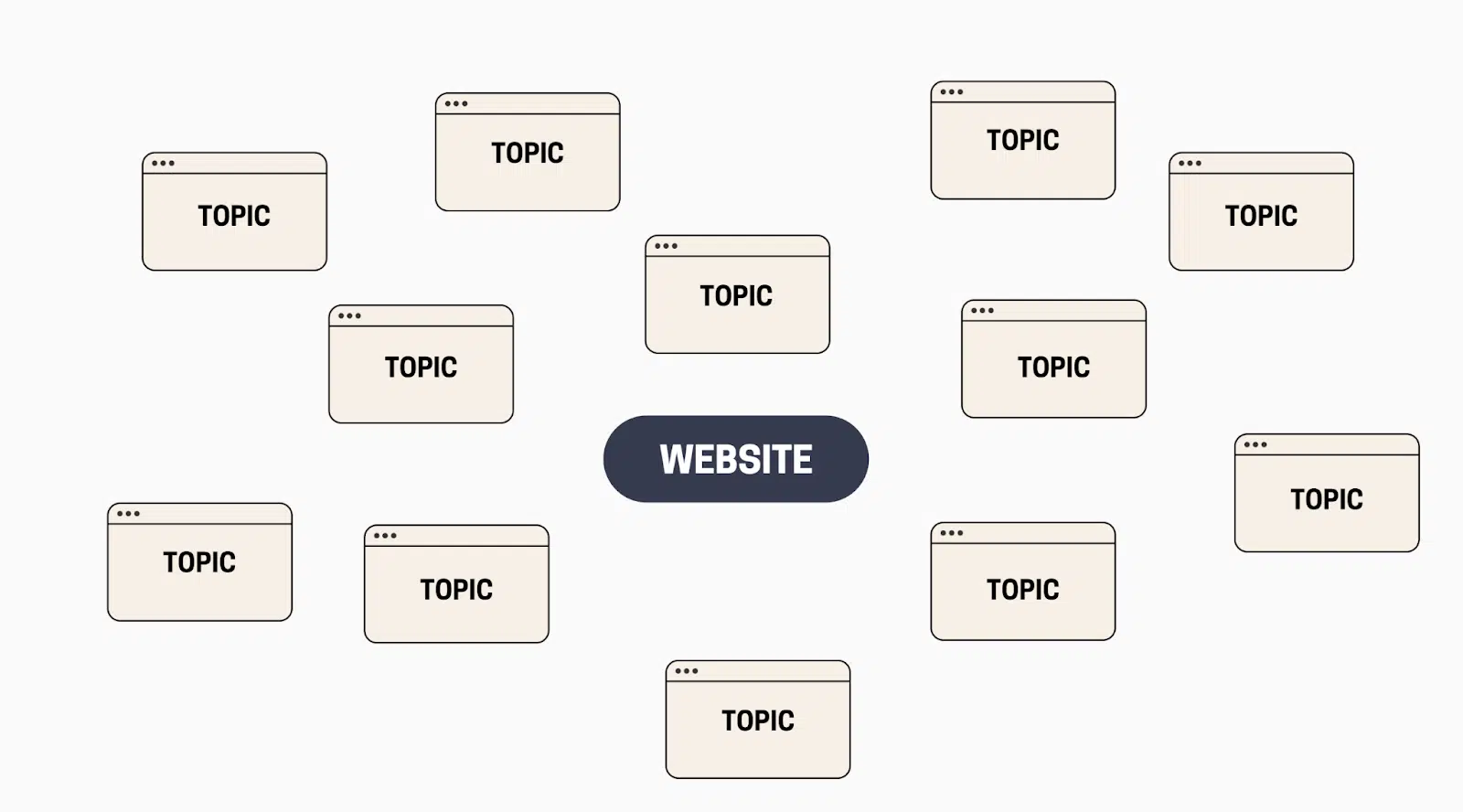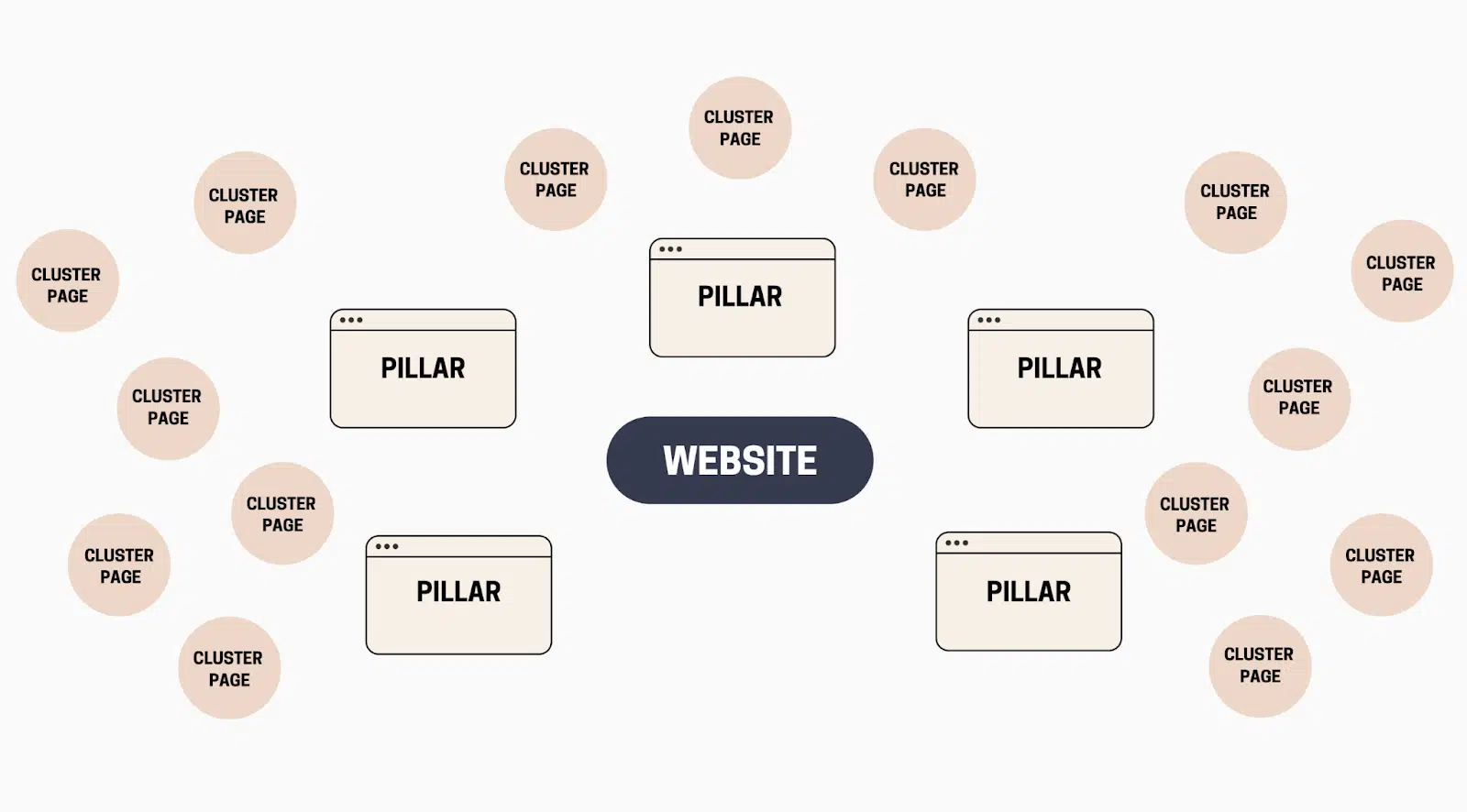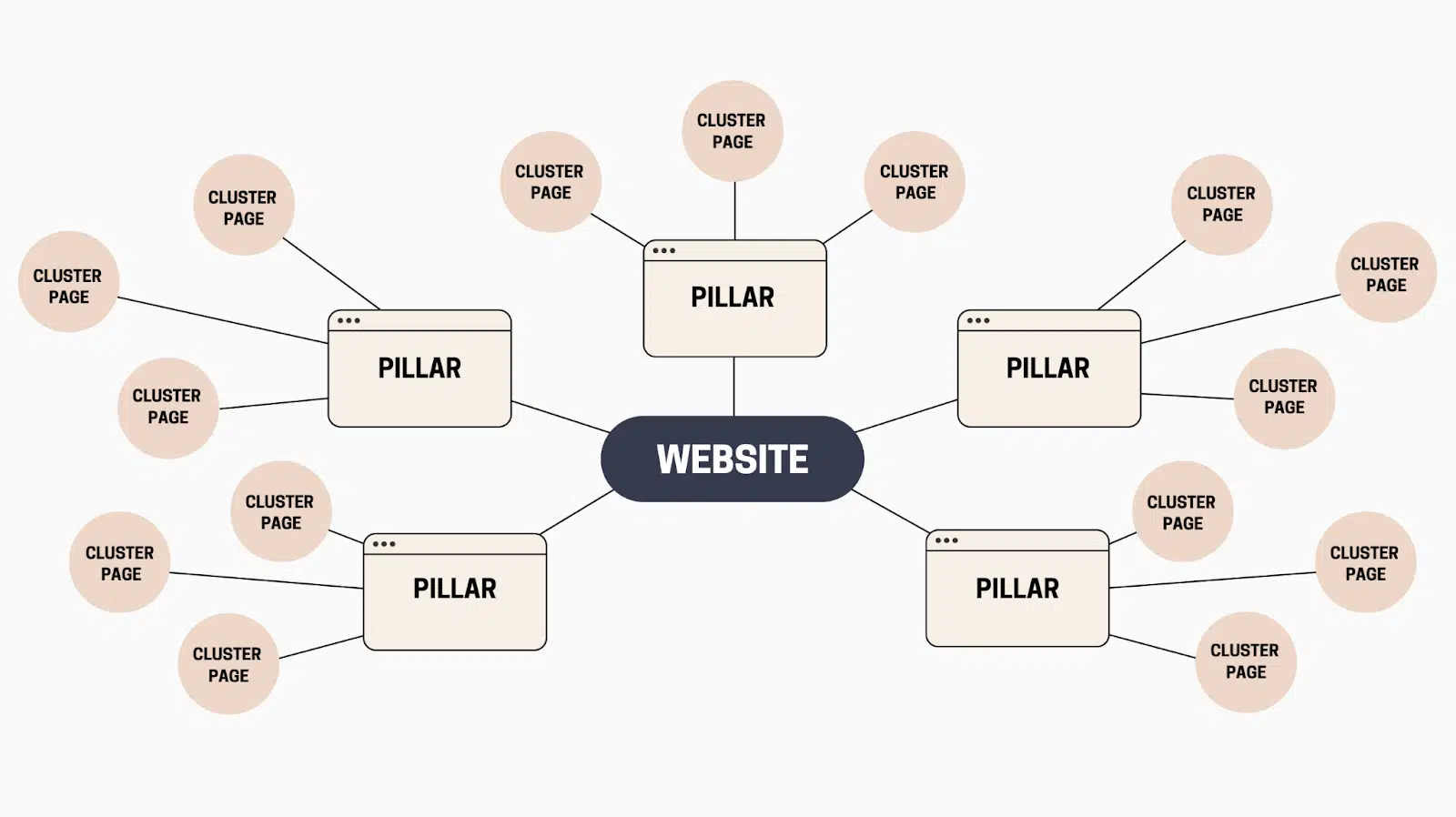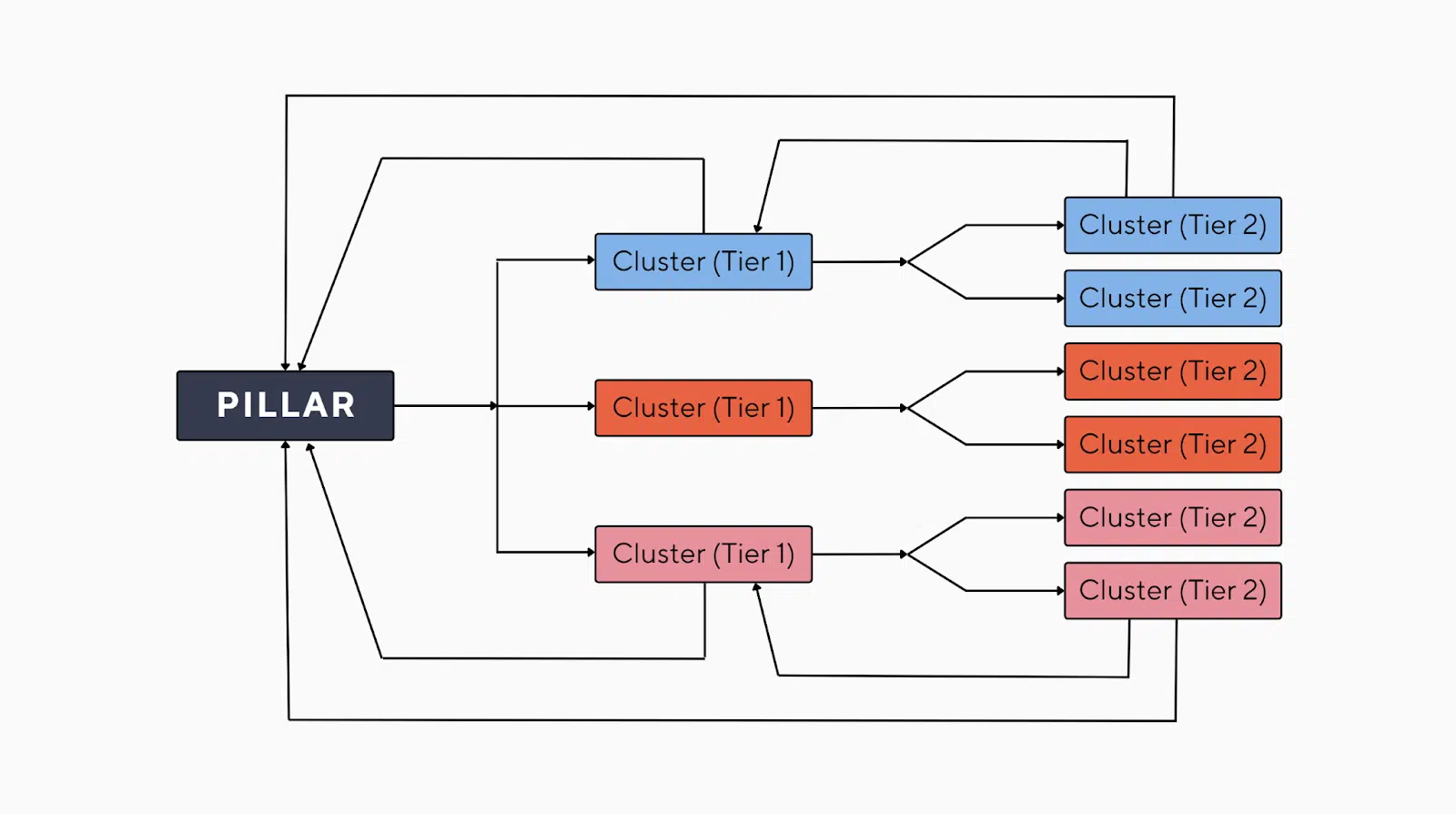Internal link building for an E-E-A-T-focused content strategy
Maximize your website's E-E-A-T signals through strategic internal linking within a well-structured pillar-cluster content model.
While many factors contribute to experience, expertise, authoritativeness and trustworthiness (E-E-A-T), SEOs focus more on content-based cues. Internal linking, however, is often overlooked.
A powerful yet significantly underutilized strategy, internal linking, is crucial in showcasing your website’s E-E-A-T and boosting your SEO performance. It involves strategically placing hyperlinks within your website’s content to connect relevant pages within your site. These links serve a dual purpose:
- They guide users to explore related information on your website.
- They signal to search engines the importance and the interconnectedness of your content.
By leveraging internal linking within a well-structured content strategy, you can unlock the key to demonstrating your website’s E-E-A-T and establishing yourself as a trusted resource.
Maximizing E-E-A-T through content structure
E-E-A-T is reshaping SEO strategies, emphasizing the need for high-quality and meaningful content. It’s about crafting stories that resonate, showcasing your expertise and building a connection with your audience – making them trust you as the authority.
The ability of a website to effectively demonstrate these essential qualities to users and search engines greatly depends on the organization, presentation and interconnection of its content.
The saying “jack of all trades, master of none” aptly highlights the challenges faced when content structure is neglected in pursuing E-E-A-T.

An unstructured approach, characterized by disparate, loosely connected pages spread across your website, undermines E-E-A-T optimization by:
- Lacking expertise: Superficial coverage of broad topics, attempting to appeal to everyone, fails to establish a deep understanding or comprehensive knowledge of any specific area.
- Diminishing authoritativeness: Frequent topic changes make establishing authority in specific areas difficult.
- Questioning trustworthiness: Lack of focus can raise concerns about your website’s reliability as a source of information.
Embracing a topical map mindset
Moving beyond the “jack of all trades” approach necessitates shifting your content strategy towards a topical map mindset. This involves visualizing your website’s content as a roadmap, where each page contributes to a broader understanding of a central theme or topic.
This shift paves the way for implementing a pillar-cluster strategy, which is instrumental for building well-structured content and showcasing E-E-A-T.

Imagine pillar pages as the main landmarks on your topical map. These comprehensive and authoritative resources delve deeply into the core topic, providing a foundational understanding of the subject matter. Think of your pillar pages as the central hubs of knowledge.
Cluster pages support your pillar pages. These are more specific and focused articles, blog posts or other content formats that explore various aspects and subtopics related to the central theme.
How this strategy boosts E-E-A-T:
- Enhanced expertise: In-depth pillar pages and informative cluster pages showcase your comprehensive understanding of the chosen topic, solidifying your position as an expert to users and search engines.
- Boost your authority: The expansive nature of your content, with the pillar and clusters covering every area of a particular topic, builds your authority on the topic.
- Increased trustworthiness: The clear organization of your website’s content enhances the user experience and builds trust.
While a well-structured topical map and pillar-cluster strategy form the foundation for a strong E-E-A-T presence, maximizing the impact of this structure relies on strategic internal linking.
Enhancing E-E-A-T with strategic link placement
Now that we’ve laid the foundation with a killer, well-structured content strategy, it’s time to supercharge our E-E-A-T with strategic internal linking.
Think of this approach as the secret sauce or the glue that holds your site’s content ecosystem together. By weaving together your pillar pages with related cluster content, we create a network of information that amplifies the structure, depth and authority of your site.

Now, our topical map is complete! The placement of strategic internal links serves as vital connectors within your website’s architecture.
Structuring information like a pro
Think of strategic internal linking as the circuitry on a motherboard, where each link is a pathway that ensures energy flows smoothly and efficiently between components. Similarly, the internal links on your website facilitate the flow of information and the distribution of search engine equity – starting from your high-priority pillars and trickling down to your supporting clusters.
These links are not random; they’re thoughtfully placed to create a clear hierarchy and logical flow of information across your site. This shows off your organizational skills and deep knowledge of the topic at hand.
It’s like telling Google, “Hey, not only do we know our stuff, but we also know exactly how it all fits together.”
Demonstrating depth with every click
Every time you link to relevant supporting content, whether it’s diving deeper into subtopics or exploring related aspects, you’re showcasing the breadth and depth of your understanding. This puts your authority on display to users and to search engines.
Signaling importance where it matters
We’re not just distributing equity down to the cluster pages. With a strong internal link strategy, we can signal the importance of the pillar pages, as well. With each cluster page linking back to the pillar, we identify to Google that these parent or pillar pages are where our true expertise is on display.
Mastering internal linking: The topic-based approach
You’ve crafted a killer content strategy and recognized the need for a robust internal link network. Now, it’s time to unlock the true potential of your websites’ content. But how can you efficiently implement an internal link strategy that maximizes your site’s E-E-A-T?
The topic-based approach to internal linking is the backbone of your pillar-cluster strategy, shaping the intricate relationships between each page. But let’s elevate our game by introducing a tiered structure for your cluster pages. After all, not all cluster pages are created equal.
Building your page hierarchy
Let’s kick things off by establishing a clear hierarchy of pages:
- Pillar page: This page stands as the pinnacle of authority, encapsulating your expertise and overarching theme.
- Cluster tier 1: These powerhouse pages either boast high traffic or strategically target high-volume search queries.
- Cluster tier 2: Acting as the supporting cast, these pages may focus on lower-volume search terms but play a pivotal role in enriching the depth of your content.
Now that we have our content hierarchy in place, it’s time to dive into the nuts and bolts of internal linking.

Identifying link targets
Before proceeding, it’s crucial to precisely identify our link targets. We’re essentially mapping out our link placement following these rules:
- Starting with the pillar page, our aim is to strategically place anchor text links that lead to the Tier 1 cluster pages. These links serve as pathways, guiding users to explore specific aspects of the overarching topic more deeply.
- Moving on to the Tier 1 cluster pages, the focus shifts slightly. Here, we ensure each page not only links back to the pillar page but also extends its reach by linking out to Tier 2 cluster pages. This interconnected web of links reinforces the unity of your content and enhances the user experience by providing multiple entry points to explore related topics.
- Lastly, on Tier 2 cluster pages, the linking strategy comes full circle. These pages link back to both the Tier 1 cluster page and the pillar page, completing the loop and solidifying the relevance and authority of your content.
Tips for optimizing link placement
Here are four additional tips for optimizing your link placement strategy:
- Incorporate anchor text strategically: Anchor text links should ideally be placed within the body of your pages, utilizing existing keywords or integrating additional relevant content. This strategic placement enhances the context and relevance of your internal links.
- Assess link placement methodically: Assessing link placement can be done by manually reviewing each page’s content or through automated tools like Screaming Frog’s custom extraction feature. While manual review offers precise control and customization, automated methods provide efficiency, particularly for larger clusters. Choose the method that best suits your needs and ensures that internal links are strategically placed to enhance content cohesion.
- Track inbound and outbound links by page: As you build your internal linking strategy, track the number of inbound and outbound links on each page. This allows you to maintain a balanced link profile and ensures that your pages are well-connected within your website’s architecture.
- Implement ongoing monitoring for performance: Monitor changes in user engagement metrics, such as bounce rate and time on page, as well as search engine ranking fluctuations. By regularly assessing the impact of internal linking on user experience and search engine visibility, you can make informed adjustments.
Internal links boost the path to E-E-A-T success
By thoughtfully integrating strategic link placement into your content strategy, you’re not just organizing content; you’re enhancing its value, relevance and appeal to your audience and search engines. This deliberate approach is the cornerstone of elevating your E-E-A-T from good to great, transforming your website into a beacon of trust, authority and expertise within your niche.
Remember, SEO is a journey, not a destination. Continue to monitor and iterate on your link building efforts to drive tangible results.
Opinions expressed in this article are those of the guest author and not necessarily Search Engine Land. Staff authors are listed here.
Related stories
New on Search Engine Land